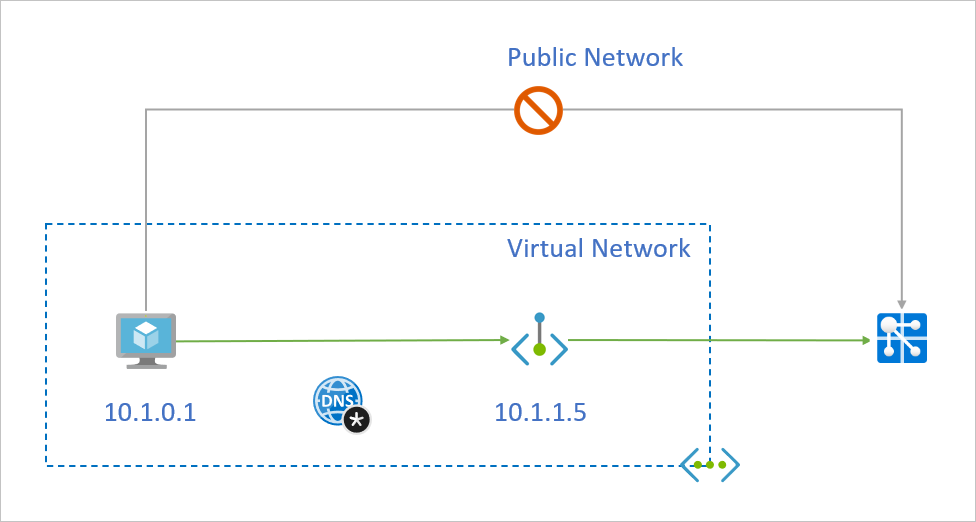
So technically, two layers of credentials will be in place. There you need to pass additional ADD credentials for Azure Portal access. Yes, the VM has its own credentials but later on, we will see that the VM is only accessible using the Bastion connection. I create the Linux VM having a name and password.
#Azure bastion private endpoint full
If needed, adding a VM with a full Windows operating system and RDP access is possible too. Note: because this VM has only a command line to access it, we will use SSH to access it. We start with a separate resource group (I use ‘jumpbox-vm-weu-rg’) and add a Ubuntu Server 20.04 LTS VM: The outside world will never know it exists. We will add a VM that has NO public endpoint, inside the VNet. Let’s add a Virtual Machine that will act as a jump box later on. The VNet is still empty, it has no devices (Azure services) yet. Note: basic DDoS Protection is good enough for us. Note: here we are offered to add a Bastion Host already. Regarding security, we leave everything for now: This results in adding this one subnet within the wizard: This way, you better understand what resources are living where.īoth to satisfy the VNet creation wizard (you need at least one subnet) and because resources (like the VM we are about to add) need to be part of a subnet, we add this ‘frontend’ subnet within the VNet:Īfter filling in the (smaller) range, click the Add button. Note: it is advised to use another IP address range than your own local range. VNets can be peered when the private IP ranges do not overlap. This is from another unrelated experiment within the same subscription. I provide an address space of 10.1.0.0/16 for a sufficient range of IP addresses: Give it a nice name and resource group:Ī virtual network spans a certain range of (private) IP addresses. We start with setting up a virtual network in Azure.

your security officer, company policies, penetration testers, or your mom 🙂 Set up a VNET Note: although the solution is known to be secure, please check everything with e.g. This results in a VM that is only accessible for those having access to the Azure subscription: Later on, we look at securing connections to the next device. Let’s set up a jump box in Azure in a number of blog posts. Azure Bastion only works while using the Azure portal. Using Azure Bastion, only people having access to the Azure portal can make use of that service to access other specific Azure resources (living in the same virtual network, on one or more subnets). Last year, I wrote this blog post about Azure Bastion already because it is a service that we can use for exactly this: The jump box should be made accessible using other credentials apart from the other connection.Įven better, if these credentials are put in AAD so the login credentials are related to the user logging in, access can be revoked once people are not part of that trusted group of users anymore (e.g. The trick with a jump box is to work with multiple layers of security.įirst, you have to log in to one device. Still, credentials once remembered by a user, are hard to forget. Think about an RDP session or using an SSH connection.

Yes, you can probably access devices in some sort of secure way already using device-specific credentials. This is a device in your network that supports access to other devices in a secure way.

When you work with Azure and Azure IoT, at some point you have to think about a jump box (aka jump server).


 0 kommentar(er)
0 kommentar(er)
